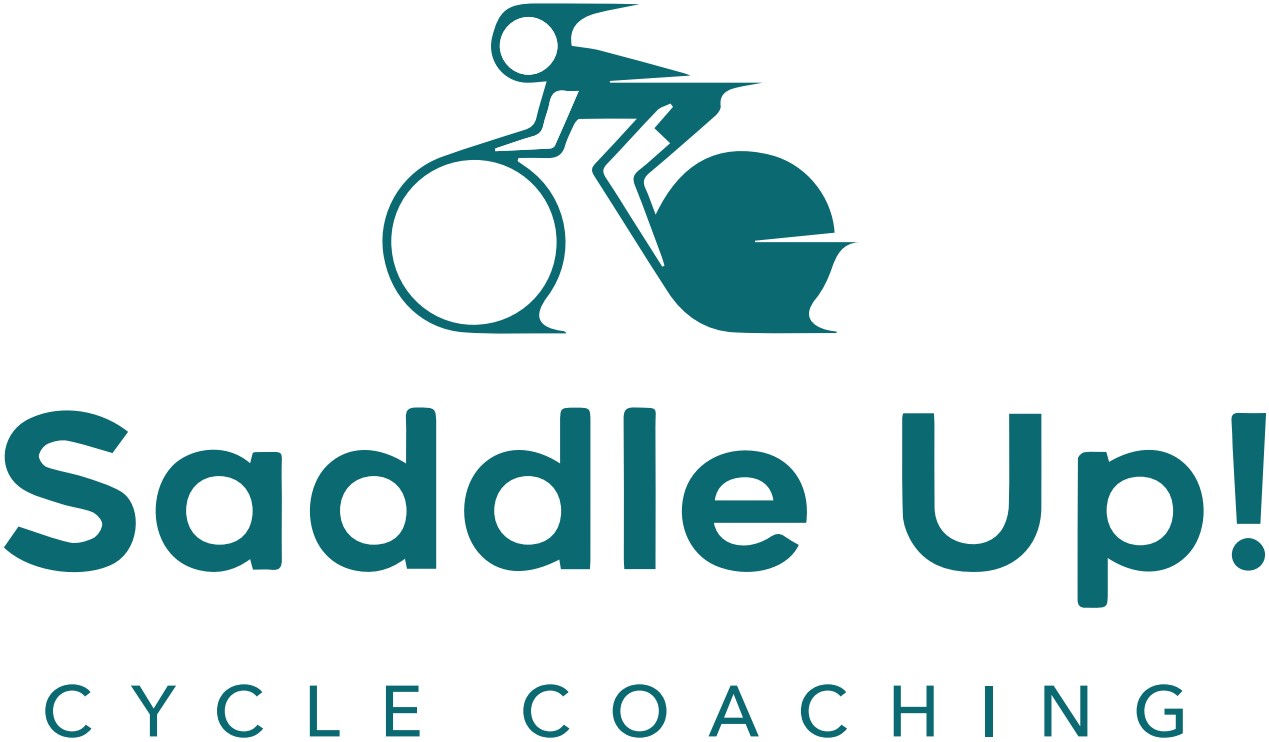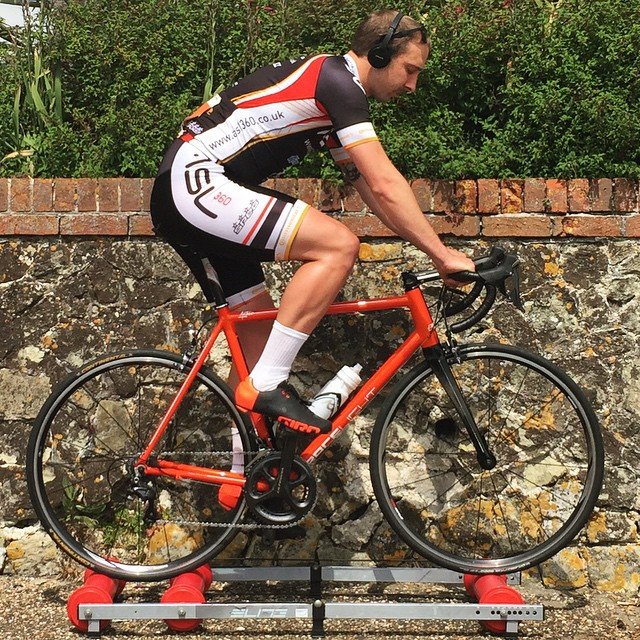Roller Sessions
What are rollers?
Rollers are a type of cycling trainer that consist of a frame, three cylinders (rollers) that are typically made of aluminum or PVC. A belt connects the middle roller to the front roller so as when the bike is ridden, both wheels spin at the same speed.
As the cyclist pedals, the rear wheel of the bike spins and rotates the rollers. The rollers provide resistance to the motion of the rear wheel, simulating the feel of outdoor cycling on a flat road. Unlike traditional stationary trainers, rollers require the rider to maintain balance, making them a more challenging training tool.
Rollers can be used for a variety of training purposes, such as improving pedalling technique and leg speed, as well as balance and handling skills. They are also a great tool for warming up before rides and races. As it allows the rider to get warmed up without putting too much force through the muscles. Many riders will also use rollers for low zone recovery rides for this same reason
There are some rollers that have built in resistance units, but the majority you come across do not. Instead as the roller speed increases, so does the power the rider needs to produce.
Riding on the rollers.
Learning to ride rollers can take some practice, but with patience and persistence, most people can master the technique. Here are some steps to help you get started:
Set up the rollers: Make sure that the rollers are positioned on a flat and stable surface. Adjust the roller spacing so that the front axle is slightly behind the axle of the front roller.
Start with support: To get comfortable with the rollers, it can be helpful to start with some support. Place a chair or other sturdy object next to the rollers and hold onto it while you get onto the bike and start pedaling. Many use kitchen counters, as well as hallways and door frames.
Keep your eyes forward: One of the key aspects of riding rollers is to keep your eyes focused on a fixed point ahead of you, such as a wall or a TV. This will help you to maintain balance and avoid the sensation of disorientation that can occur when looking down at the moving rollers.
Start pedaling slowly: Begin pedalling slowly and gradually increase your speed as you become more comfortable. Try to maintain a steady cadence and avoid sudden movements or jerky pedaling. Imagine yourself pedalling from your hips, you need to be as smooth as possible.
Use your core muscles: To maintain balance, engage your core muscles and keep your upper body steady. This will help you to stay centered on the rollers and avoid swaying from side to side.
Practice regularly: Like any new skill, learning to ride rollers takes practice. Try to ride on the rollers for short periods of time at first, gradually increasing the duration and intensity of your workouts as you become more comfortable.
Consider using a mat: To protect your floors and reduce noise, consider using a mat under the rollers.
Overall, learning to ride rollers can be a fun and rewarding experience, providing a challenging workout and helping you to improve your cycling skills.
Roller sessions to try
Here are a few things you can do to improve your comfort and control on the bike when using rollers. Start with 30-minute blocks. Following the sessions make sure to take the time to stretch properly as you'll be engaging various muscle groups. These exercises can be more dynamic than riding in real life!
To prevent noise and sweat from seeping into the floor, set up a fan in front of you and use a couple of yoga mats. This will also protect your flooring from the rollers.
If you fancy some inspiration, have a look at this video from GCN on one of our sessions!
Moving around the bike
Start by spinning easily for ten minutes. Then, take your left hand off the handlebars and move it around your body for thirty seconds. Move it smoothly and leisurely without rushing. You can raise it, scratch your back, or reach forward like Superman. After that, place your hand back on the bars, roll your shoulders, and relax for thirty seconds.
Repeat the same process with your right arm, alternating arms in sets of thirty seconds of movement and thirty seconds of rest. Do this five times with each arm. As you get comfortable, you can try riding with no hands or one leg, using a wall or door frame for support.
Next, practice moving your hands between positions on the handlebars randomly for five minutes. Switch between tops, drops, and hoods every thirty seconds while focusing on engaging your body and core.
Finally, challenge yourself to ride as low as possible on the bike. Bend your elbows, drop your shoulders, and put your hands in the drops. Try to maintain this "aero" position for as long as possible, and if you dare, see how close you can get your nose to the stem. This exercise helps you strengthen your core and reduce arm strain.
To finish, spin easily for five minutes to cool down.
Spin Ups
This is an exercise that can boost your confidence with higher leg speeds. With practice, you can achieve smoother and more fluid movements. For optimal results, perform this exercise while in the drops.
To begin, warm up with some easy spinning for 10 minutes.
Once warmed up you will then aim to complete a 6-10 second burst on the pedals. Whereby you increase your leg speed with a small seated sprint at the start of each minute.
Following the acceleration, allow your legs to slow back down, regain composure and stay in control of the pedals. Spin your legs nice and easy for the remainder of the minute (50 seconds).
Repeat this process for a total of 10 accelerations over 10 minutes.
Pay attention to how your legs feel after the six-second burst. They will still be spinning fast, so focus on maintaining a smooth and steady motion as you slow them down. You don't need to push back on the pedals; instead, allow your legs to "float," spinning quickly but without exerting extra force.
Cadence Builds
Start with some easy spinning session for five minutes and pay attention to your cadence during this time.
Choose a fairly mid to easy gear
Next, you will perform a three-minute block where you increase your RPM by five revs every 30 seconds, starting at around 90/100 RPM and finishing at about 120/130 RPM. As you approach the end of the block, it may become more challenging to maintain the pace. However, it's crucial to stay relaxed, focus on your core, and avoid excessive movement in the saddle. Pay attention to the point where your body starts to move around or when it feels like your legs can't keep up.
Take a two-minute break during which you spin easily.
Repeat the ramp and the rest for a total of four times, completing four ramps in 20 minutes.
Spin easy to cool down.



